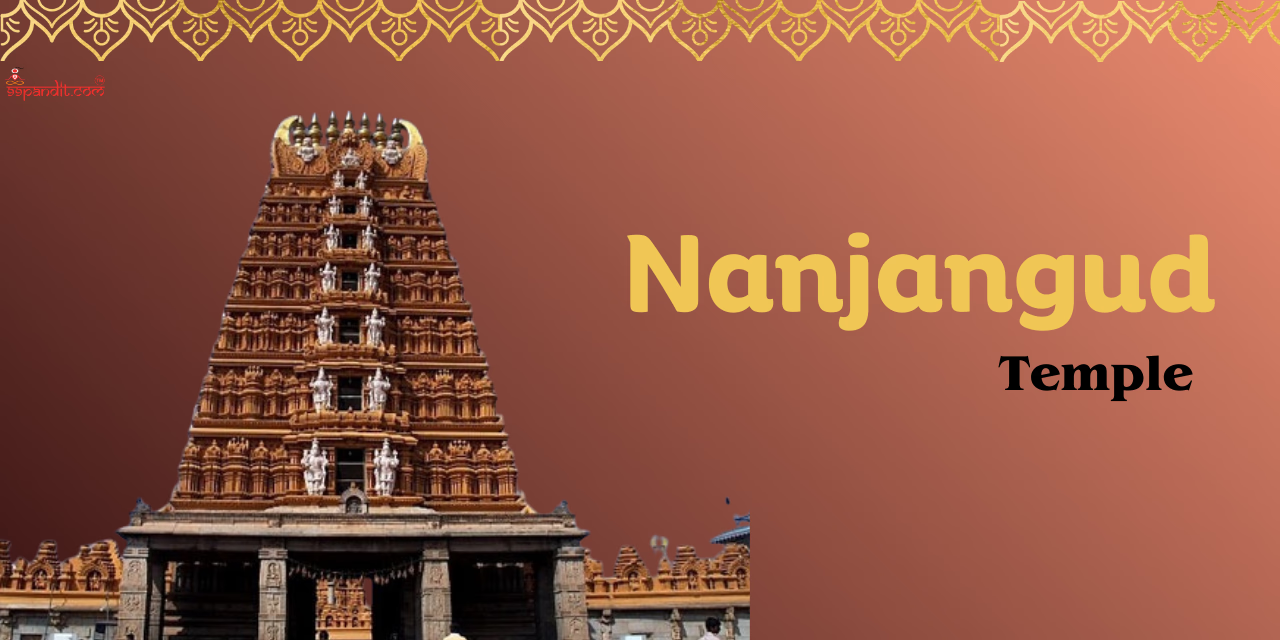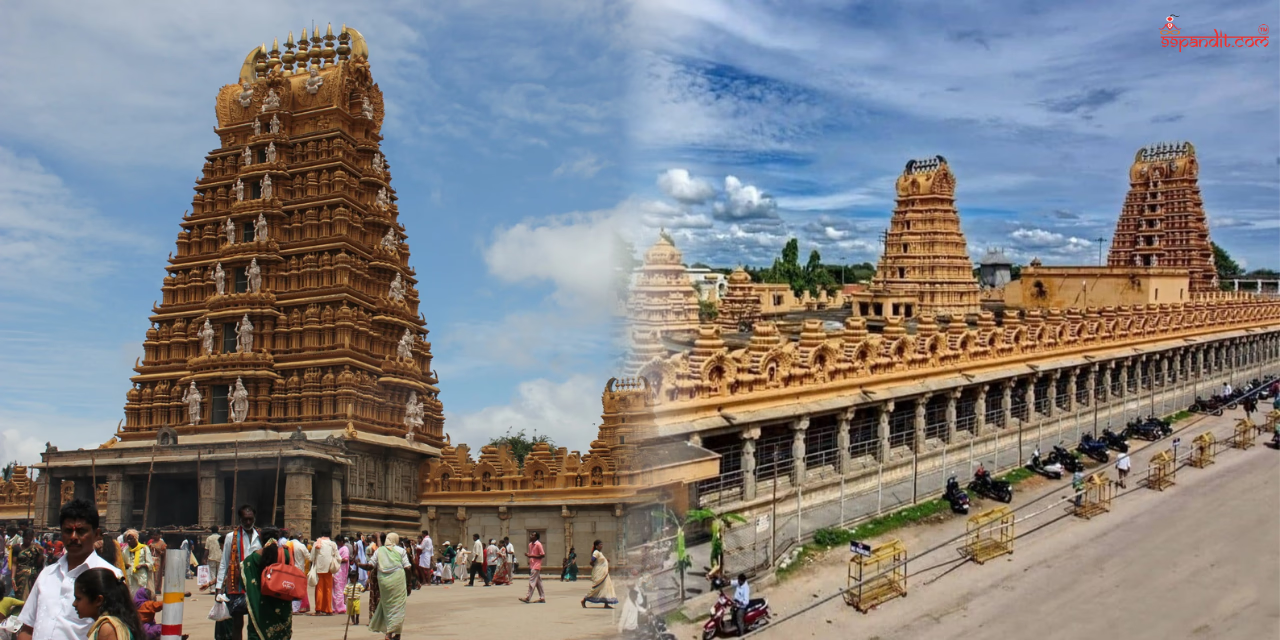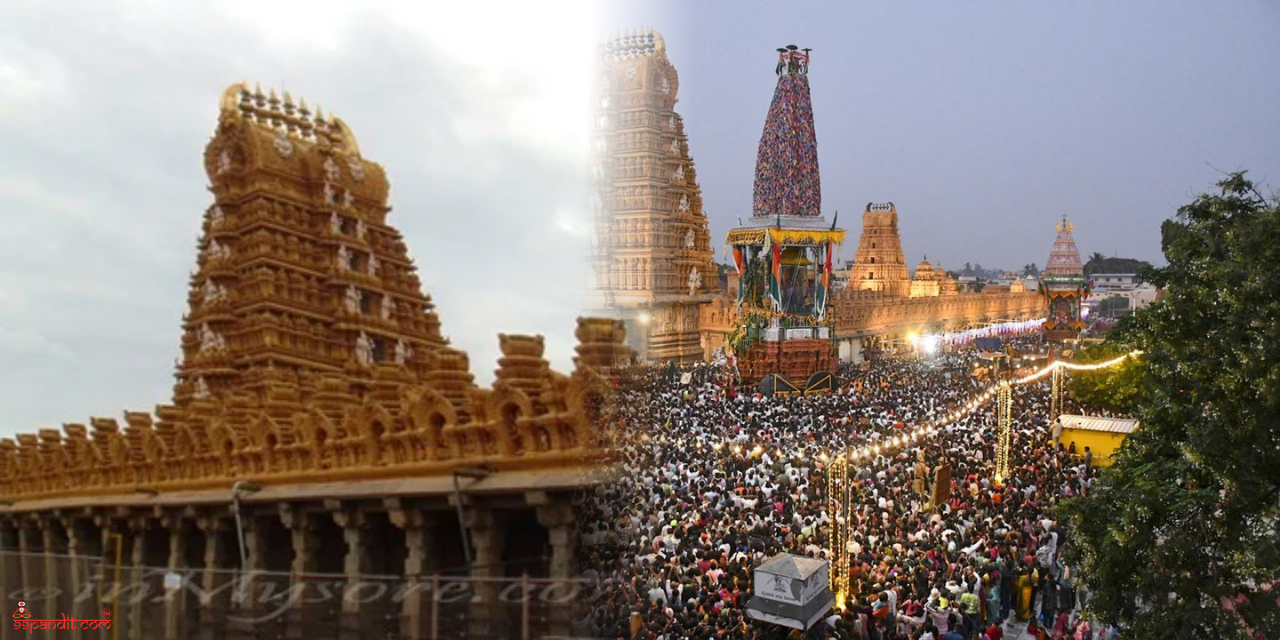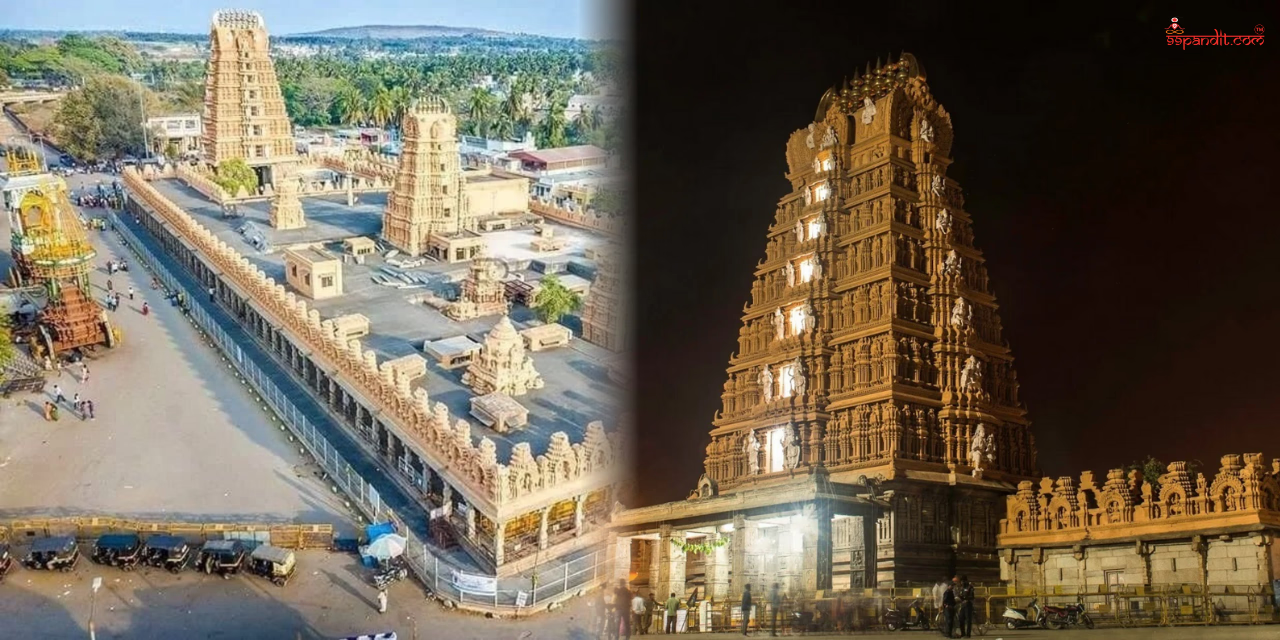Top 7 Famous Temples in Varanasi You Can’t Miss
Famous Temples in Varanasi: Varanasi, also called Kashi or Banaras, the city of Lord Shiva, is believed to achieve liberation.…
 0%
0%

Nanjangud Temple: Numerous temples in India are dedicated to Lord Shiva. It doesn’t matter whether you live in the North or the South. In India, we have temples of Lord Shiva with great significance.
One of the oldest temples where Lord Shiva is worshipped is in Karnataka. This Temple is one of the most admirable temples of Mahadev.

This temple is not just a temple of Lord Shiva, but a living gem of centuries of history and architecture.
The Nanjangud Mandir draws thousands of pilgrims and visitors. This temple is also known as the Dakshina Kashi, which means the Varanasi of the South.
In this blog, we shall learn about the great history, architectural magnificence, and religious importance of the sacred temple, Nanjangud Temple in Karnataka.
Along with this, we will share some great places to visit near the temple. So let us get started!!
| Rituals | Time |
| Usha Kala Abhishekam | 6:30 AM |
| Pratha Kala Abhishekam | 9:00 AM |
| Sangama Kala Abhishekam | 11:00 AM |
| Madhyana Kala Abhishekam | 12:00 PM |
| Pradoshkala Abhishekam | 6:30 PM |
| Ekanta Kala Abhishekam | 8:00 PM |
The temple hours for darshan are as follows:
Nanjangud Temple is also known as Nanjeshwara Temple or Srikanteshwara Temple. This temple is dedicated to Nanjuda.
The temple is located in Nanjangud, Mysore city, in the state of Karnataka. It is located on National Highway 17 on the banks of the Kabini River, 22 km from Mysore.
It is believed that the temple is about a thousand years old. There is a huge statue of Lord Shiva installed outside.
The temple has been built in memory of the battle fought by Lord Ganesha with various gods. It is said that the royal family of Nanjangud used to come to this temple.
Regarding the Shiva Linga established at this place, known as Dakshina Kashi of the South. It is believed that it was established by the sage Gautama.
The history of the Nanjangud temple is believed to be more than a thousand years old. Some believe that the temple was built by the Ganga Rulers in the 9th century during their occupation of this land.
While some believed that the temple was constructed by the Kings of Chola in the 12th century. After that, the Hoysala Kings made numerous additions.

The kings of Mysore carried out various renovations in the temple. Tipu Sultan and his father, Hyder Ali, were very much related to the temple. The temple is famously known in Nanjangud as the Varanasi of the South.
Hyder Ali was included in the temple by donating a necklace to God, as his elephant’s eye was healed by the temple’s holy water.
It is said that Nanjuda had cured Hyder Ali’s favourite elephant, due to which Hyder Ali was pleased and gifted him a priceless necklace. Even today, that necklace is worn by him on special occasions.
As said earlier, the Nanjangud temple is one of the most significant temples of Lord Shiva in South India. It is also known as the Kashi of the South.
It is a highly sought-after pilgrimage site within India, and it holds such historical and architectural importance.
The temple’s surroundings illustrate architectural structures that describe its glorious past and grandeur.
This temple is a Srikanteshwara temple and is a temple to Lord Shiva. The temple name has significance. Nanju means poison in the Kannada language.
Nanjundeshwara means the God who drank the poison. This name comes from the mythology associated with the great churning of the ocean.
This is the reason why Nanjangud is named, as Nanjangud means the residence of God Nanjundeshwara.
It is also thought by the devotees that the Lord cures many varieties of diseases. Nanjangud means, in other words, the place where Nanjundeshwara lives.
Nanjungud Rasabaley is a famous variety of bananas in the town that made the town famous in the region.
The glorious and spiritual Nanjangud Temple is an architectural wonder built in the Dravidian style.
It has undergone renovation and enlargement by various kings and dynasties, including the Cholas, Hoysalas, Krishnadevaraya, and most recently, the Wodeyaras of Mysore, from the 9th century until the 19th century.
It was during the Cholas or Gangas that the Garba Griha was built. In the 13th century, the mandapa in the front was built.
The shrine was subsequently changed to a brick and mortar shikara during the Vijayanagara period.
This was the next step in the building process. In 1845, the brick and mortar gopuram was built.
The whole temple complex covers a little over 1 acre of land. The temple measures 385 feet x 160 feet, making it one of the biggest temples in Karnataka.
The main Gopura (tower) at the entrance is about 120 feet tall and is also one of the biggest in the state. There are 121 statues of Shiva depicted in various avatars with more than 65 Lingas.
The inner walls of the temple also depict 32 forms of Lord Ganapati. This is the only temple where 32 forms of Lord Ganesha can be seen.
The temple serves as the hub for many religious festivals. One of the most important annual festivals taking place each year is the Panchamaha Rathothsava, which has followers of Srivaishnavism and Vaishnavism coming together at this temple.
The unique part that defines this festival is a procession of 5 chariots. The first chariot is the Ganapathy Ratha, and the following one is the Chandikeshwara Ratha.

Last, the other 3 chatlocks are Gautama Ratha, Subramanya Rath, and Parvathi Ratha; Gautama Ratha being roughly 90 feet tall. The Chariot festival is held twice every year.
The traditional pujas are offered to five idols on different chariots- famously Lord Nanjundeshwara, Lord Ganapathi, Lord Subramanya, Lord Chandikeshwara, and Goddess Parvathi. After the completion of the puja, many devotees pull the Chariots all over the town.
Other Festivals celebrated in the Temple:
There are the following key attractions to see near the temple. These are:
If you are planning to visit the Nanjangud Temple, also be sure to visit the Ranganatha Swamy temple.
Get blessings and take part in the rituals at this temple found at the center of Nanjangud.
This temple is dedicated to Lord Vishnu (Ranganathaswamy. The temple was built in beautiful Dravidian-style architecture.
One of the main interests there is the Srikanteshwara Temple. The Temple has a high tower known as a Shikhara and is dedicated to Lord Shiva.
If you plan to visit Mysore city or are on your way to the city of Mysore, do not forget this enchanting place, which you need to add to your bucket list.
The ancient temple is also dedicated to Lord Shiva. The temple is also known for its historical significance and architecture.
The temple still shows Early Chola architecture, and the historical documents that show ancient period religious practices in that region.
The temples in Nanjangud are better known; however, Nanjangud Fort provides snapshots of Nanjangud’s historical stories.
The fort still has remnants of its walls and gates to show how Nanjangud used to be. The fort gave a strategic advantage during battles.
The Nanjangud temple is a sacred site, so you will want to dress appropriately beforehand.
Temples will actually expect you to be dressed in traditional garb, for example, a saree or a kurta-pyjama, to respect the temple’s place in the respective religion.

It is respectful and will, at the very least, help you feel welcome in the environment. In any case, do not dress in clothing that is too short or bright, as that may, at best, be considered inappropriate and, at worst, disturb the experience of another devotee.
Before entering the Nanjangud temple doors, it is a general practice to take off your shoes before entering the temple. You want to maintain hygiene, but you will likely also want to respect God himself.
By taking off your shoes, you ensure that the temple is honored and prepared for your immediate religious presence and that you honor the environment of the temple.
Temples are considered to be a sacred environment. Each individual has a responsibility to maintain the peace and be respectful in the temple.
A singular loud conversation or vibrating mobile phone can disrupt the peace for other individuals.
We should exercise restraint in all manners of our behavior to respect the personal feelings of others in their temple experience.
Multiple temples have photography policies due to the preservation of sanctity. Because they may have their own motivations, it ruins the respectful sanctity of the location and puts a distraction in the way of their worship.
Where a person may simply enjoy the act of taking a picture of the idol or a location, they should consider seeking permission.
This ensures that you are abiding by the temple rules, but also respect the great importance and attention of other devotees.
Donating is a nice habit to have, but you need to be sure to go about it properly. Many times, devotees throw money into the donation box without thinking, which is not right.
Also, be sure about where your donation is actually going. If you consider a few of these tips while visiting the temple, your overall experience will be enhanced.
Visiting one of the places of worship should not just be the darshan, but also should incorporate a place of spiritual peace.
Nanjangud Temple has a vast history and cultural identity, with much built form and religious history.
It is an ancient town that developed with temples, history, and is immersed in the South Indian vibe without being within Mysore.
The temple of Nanjangud is situated on the bank of the river Kapila. The river Kapila is one of the tributaries of the Cauvery (Kaveiri) River.
Nanjangud or Garalapuri is famous for having the big Nanjundeswara or Srikanteswara temple.
Nanjunda is explained as Shiva who had taken Halahala or poison, and this Nanjunda became Vishakanta or Shrikanta as he digested it.
Then the names of the deity are Nanjundeswara and Srikanteshwara. The one who cures the diseases of his devotees.
I hope you liked reading this article. 99Pandit always tries to cater to the content every spiritual person needs to know.
This helps you in connecting with your roots. For more such blogs, stay tuned with 99Pandit!

100% FREE CALL TO DECIDE DATE(MUHURAT)

Table Of Content
Filters by categories
All Pujas
Puja On Special Events
Upcoming Pujas
Dosha Nivaran Pujas
Mukti Karmas
Filters by Trending Topics
Filters by Regions
North Indian Pujas
South Indian Pujas